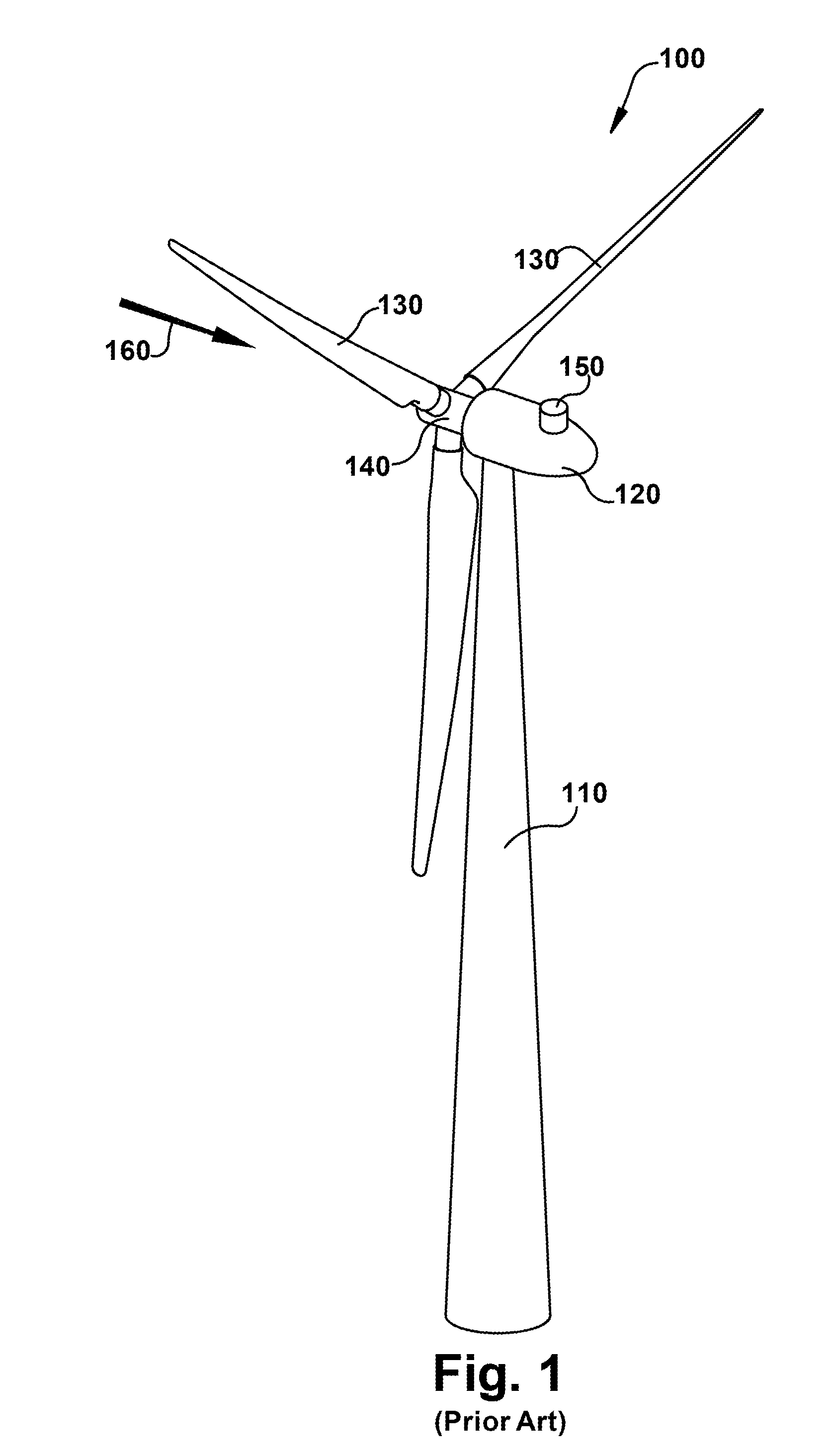Wind turbine metrology system
a technology for wind turbines and metrology systems, applied in the direction of rotors, vessel parts, instruments, etc., can solve the problems of turbines not optimally aligned with the oncoming wind, blades affecting the wind speed and direction, and less than optimum energy production
- Summary
- Abstract
- Description
- Claims
- Application Information
AI Technical Summary
Benefits of technology
Problems solved by technology
Method used
Image
Examples
Embodiment Construction
[0025]A typical commercial horizontal axis wind turbine (HAWT), hereafter “wind turbine”, 100 is illustrated in FIG. 1. The wind turbine 100 may include a tubular tower 110, which is often manufactured of steel. The tower 110 may be erected by stacking multiple tower segments on top of each other. The tower 110 supports the weight of the nacelle 120, blades 130 and hub 140. Towers may also be of the lattice (or truss) type, and tubular towers may alternatively be formed of concrete or other suitable materials. The nacelle 120 typically houses the drive train (e.g., gearbox, shafts, couplings, generator, etc.), as well as the main frame (also called bedplate) and yaw drives. Other items such as the control electronics may be housed within the nacelle 120 as well. Typically, the nacelle 120 has an outer skin that is comprised of a lightweight material such as fiberglass or a graphite composite. The main function of the nacelle skin is to protect the contents from the elements (e.g., r...
PUM
 Login to View More
Login to View More Abstract
Description
Claims
Application Information
 Login to View More
Login to View More - R&D
- Intellectual Property
- Life Sciences
- Materials
- Tech Scout
- Unparalleled Data Quality
- Higher Quality Content
- 60% Fewer Hallucinations
Browse by: Latest US Patents, China's latest patents, Technical Efficacy Thesaurus, Application Domain, Technology Topic, Popular Technical Reports.
© 2025 PatSnap. All rights reserved.Legal|Privacy policy|Modern Slavery Act Transparency Statement|Sitemap|About US| Contact US: help@patsnap.com



